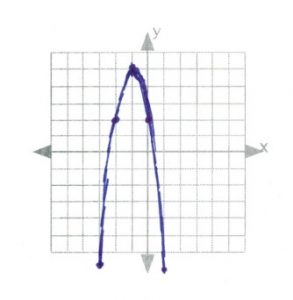Answer Key 10.6
[latexpage]
- \(\text{intercepts: }\)\(\begin{array}{rrl}
y&=&0 \\
0&=&x^2-2x-8 \\
0&=&(x-4)(x+2) \\
x&=&4,-2 \\
\end{array}\)\(\text{vertex: }\)\(\begin{array}{l}
\left[\dfrac{-b}{2a}, f\left(\dfrac{-b}{2a}\right)\right] \\ \\
(1,-9)
\end{array}\)\(\text{line of symmetry: }\)\(\begin{array}{rll}
x&=&\dfrac{-b}{2a} \\ \\
x&=& \dfrac{-(-2)}{2(1)}\Rightarrow \dfrac{2}{2}\text{ or }1 \\ \\
\therefore f(1)&=&1^2-2(1)-8 \\
\phantom{\therefore}f(1)&=&-9
\end{array}\)
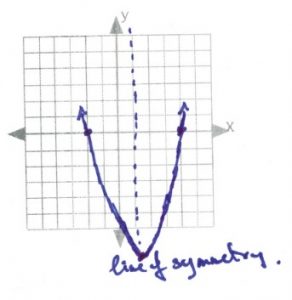
- \(\text{intercepts: }\)\(\begin{array}{rrl}
0&=&x^2-2x-3 \\
0&=&(x-3)(x+1) \\
x&=&3,-1
\end{array}\)\(\text{line of symmetry: }\)\(\begin{array}{rll}
x&=& \dfrac{-(-2)}{2(1)}\Rightarrow \dfrac{2}{2}\text{ or }1
\end{array}\)\(\text{vertex: }\)\(\begin{array}{rll}
f(1)&=&1^2-2(1)-3 \\
f(1)&=&1-2-3 \\
f(1)&=&-4 \\ \\
&&(1,-4)
\end{array}\)
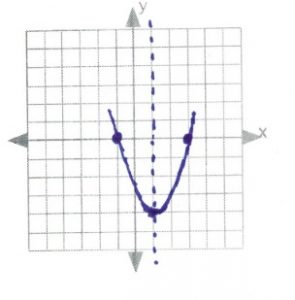
- \(\text{intercepts: }\)\(\begin{array}{rrl}
0&=&2x^2-12x+10 \\
0&=&2(x^2-6x+5) \\
0&=&2(x-5)(x-1) \\
x&=&5,1
\end{array}\)\(\text{line of symmetry: }\)\(\begin{array}{rll}
x&=&\dfrac{-b}{2a} \\ \\
x&=& \dfrac{-6}{2(1)}\Rightarrow \dfrac{6}{2}\text{ or }3
\end{array}\)\(\text{vertex: }\)\(\begin{array}{rll}
f(3)&=&2(3)^2-12(3)+10 \\
f(3)&=&18-36+10 \\
f(3)&=&-8 \\ \\
&&(3,-8)
\end{array}\)
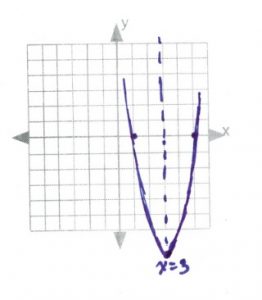
- \(\text{intercepts: }\)\(\begin{array}{rrl}
0&=&2x^2-12x+16 \\
0&=&2(x^2-6x+8) \\
0&=&2(x-4)(x-2) \\
x&=&4,2
\end{array}\)\(\text{line of symmetry: }\)\(\begin{array}{rll}
x&=&\dfrac{-b}{2a} \\ \\
x&=& \dfrac{-(-12)}{2(2)}\Rightarrow \dfrac{12}{4}\text{ or }3
\end{array}\)\(\text{vertex: }\)\(\begin{array}{rll}
f(3)&=&2(3)^2-12(3)+16 \\
f(3)&=&18-36+16 \\
f(3)&=&-2 \\ \\
&&(3,-2)
\end{array}\)
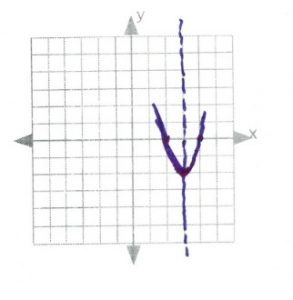
- \(\text{intercepts: }\)\(\begin{array}{rrl}
0&=&-2x^2+12x-18 \\
0&=&-2(x^2-6x+9) \\
0&=&-2(x-3)(x-3) \\
x&=&3
\end{array}\)\(\text{line of symmetry: }\)\(\begin{array}{rll}
x&=&\dfrac{-b}{2a} \\ \\
x&=& \dfrac{-12}{2(-2)}\Rightarrow \dfrac{-12}{-4}\text{ or }3
\end{array}\)\(\text{vertex: }\)\(\begin{array}{rll}
f(3)&=&-2(3)^2-12(3)-18 \\
f(3)&=&-18+36-18 \\
f(3)&=&0 \\ \\
&&(0,3)
\end{array}\)
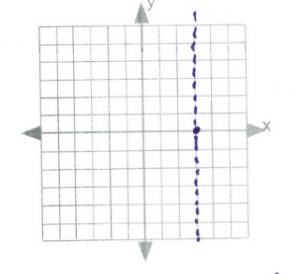
- \(\text{intercepts: }\)\(\begin{array}{rrl}
0&=&-2x^2+12x-10 \\
0&=&-2(x^2-6x+5) \\
0&=&-2(x-5)(x-1) \\
x&=&5,1
\end{array}\)\(\text{line of symmetry: }\)\(\begin{array}{rll}
x&=&\dfrac{-b}{2a} \\ \\
x&=& \dfrac{-12}{2(-2)}\Rightarrow \dfrac{-12}{-4}\text{ or }3
\end{array}\)\(\text{vertex: }\)\(\begin{array}{rll}
f(3)&=&-2(3)^2-12(3)-10 \\
f(3)&=&-18+36-10 \\
f(3)&=&8 \\ \\
&&(3,8)
\end{array}\)
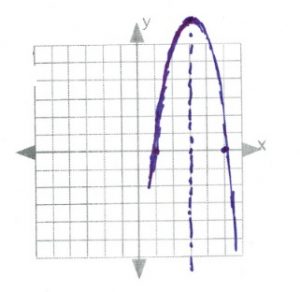
- \(\text{intercepts: }\)\(\begin{array}{rrl}
0&=&-3x^2+24x-45 \\
0&=&-3(x^2-8x+15) \\
0&=&-3(x-3)(x-5) \\
x&=&3,5
\end{array}\)\(\text{line of symmetry: }\)\(\begin{array}{rll}
x&=&\dfrac{-b}{2a} \\ \\
x&=& \dfrac{-24}{2(-3)}\Rightarrow \dfrac{-24}{-6}\text{ or }4
\end{array}\)\(\text{vertex: }\)\(\begin{array}{rll}
f(4)&=&-3(4)^2+24(4)-45 \\
f(4)&=&-48+96-45 \\
f(4)&=&3 \\ \\
&&(4,3)
\end{array}\)
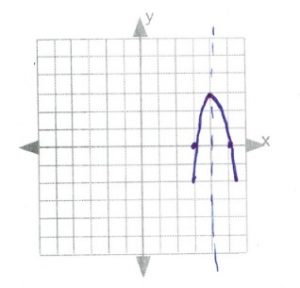
- \(\text{intercepts: }\)\(\begin{array}{rrl}
0&=&-2(x^2+2x)+6 \\
0&=&-2x^2-4x+6 \\
0&=&-2(x^2+2x-3) \\
0&=&-2(x+3)(x-1) \\
x&=&-3,1
\end{array}\)\(\text{line of symmetry: }\)\(\begin{array}{rll}
x&=&\dfrac{-b}{2a} \\ \\
x&=& \dfrac{-(-4)}{2(-2)}\Rightarrow \dfrac{4}{-4}\text{ or }-1
\end{array}\)\(\text{vertex: }\)\(\begin{array}{rll}
f(-1)&=&-2(-1)^2-4(-1)+6 \\
f(-1)&=&-2+4+6 \\
f(-1)&=&8 \\ \\
&&(-1,8)
\end{array}\)
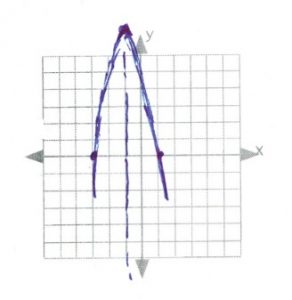
- \(\text{line of symmetry: } \\ \)
\(x=\dfrac{-b}{2a}\Rightarrow \dfrac{-(-6)}{2(3)}\Rightarrow \dfrac{6}{6}\text{ or }1\)\(x\) \(y\) 3 4 2 −5 1 −9 0 −5 −1 4 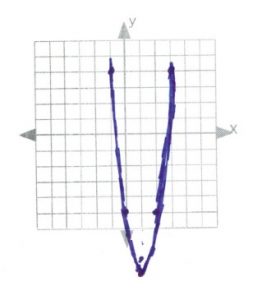
- \(\text{line of symmetry: } \\ \)
\(x=\dfrac{-b}{2a}\Rightarrow \dfrac{-(-4)}{2(2)}\Rightarrow \dfrac{4}{4}\text{ or }1\)\(x\) \(y\) 3 3 2 −3 1 −5 0 −3 −1 3 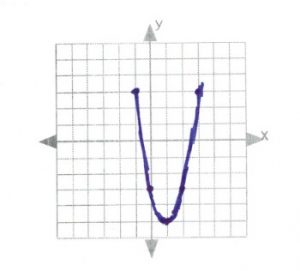
- \(\text{line of symmetry: } \\ \)
\(x=\dfrac{-b}{2a}\Rightarrow \dfrac{-4}{2(-1)}\Rightarrow \dfrac{-4}{-2}\text{ or }2\)\(x\) \(y\) 5 −3 4 2 3 5 2 6 1 5 0 2 −1 −3 
- \(\text{line of symmetry: } \\ \)
\(x=\dfrac{-b}{2a}\Rightarrow \dfrac{-(-6)}{2(-3)}\Rightarrow \dfrac{6}{-6}\text{ or }-1\)\(x\) \(y\) 1 −7 0 2 −1 5 −2 2 −3 −7 